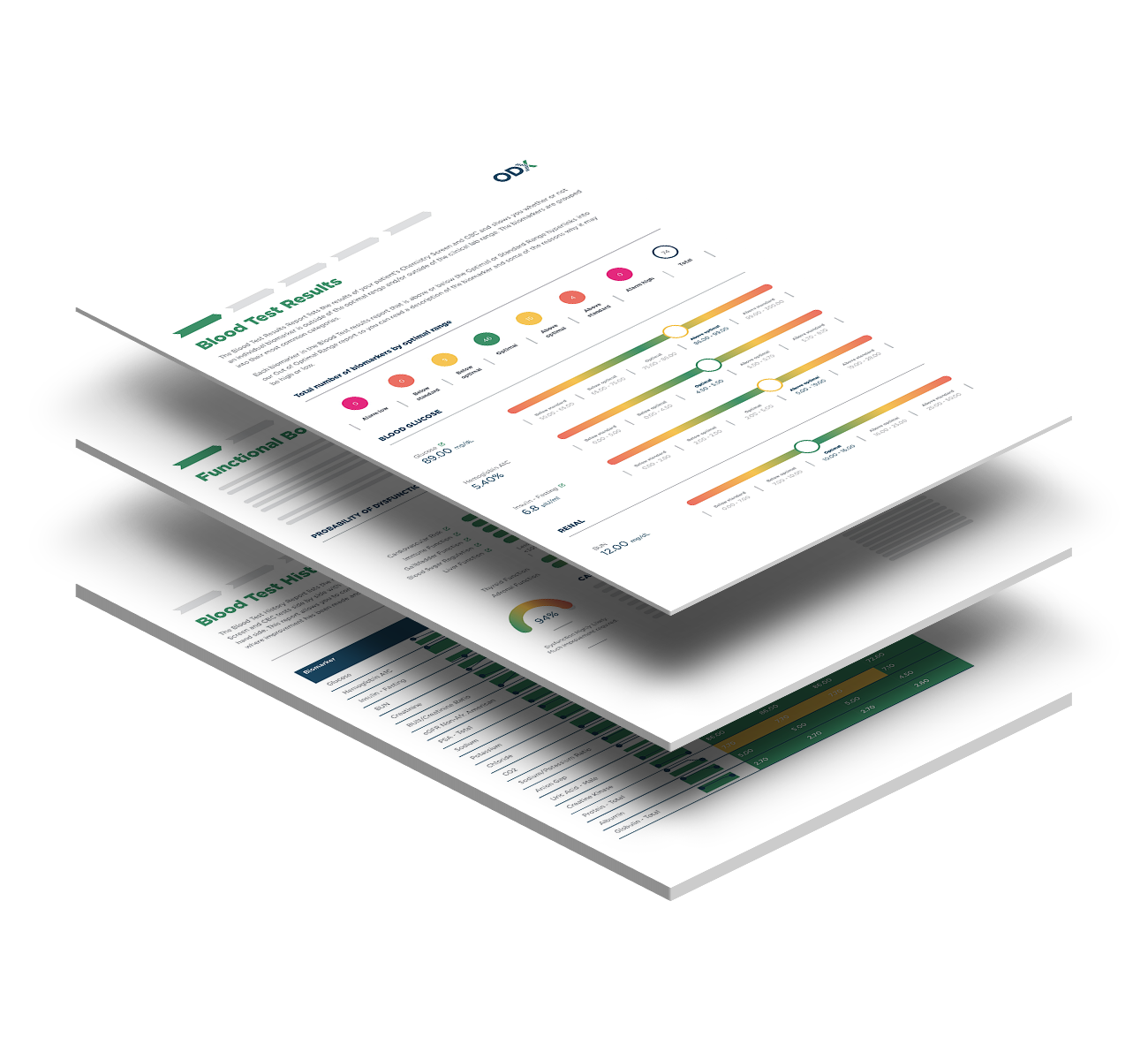Welcome to part 2 of the ODX Inflammation Series. In this post, the ODX Research Team reviews an important concept called "inflammaging."
Inflammation and aging combine to create “inflammaging.”
Dicken Weatherby, N.D. and Beth Ellen DiLuglio, MS, RDN, LDN
The ODX Inflammation Series
- Inflammation Part 1 - The Fire Inside - Overview
- Inflammation Part 2 - The Fire Inside - "Inflammaging"
- Inflammation Part 3 - A Focus on Cytokines
- Inflammation Part 4 - Cytokines & Their Functions
- Inflammation Part 5 - The Cytokine Storm
- Inflammation Part 6 - Cytokine Biomarkers
- Inflammation Part 7 - Establishing Cytokine Ranges
- Inflammation Part 8 - Interleukin 6
- Inflammation Part 9 - Interleukin 10
- Inflammation Part 10 - The IL-6 : IL-10 Ratio
- Inflammation Part 11 - Resolution & Intervention
Aging has been associated with a perpetual inflammatory cascade that involves IL-1alpha, IL-6, and NF-kappa B. Inflammaging refers to chronic low-grade systemic inflammation associated with aging but not caused by an infectious agent.
This age-related cytokine dysregulation can contribute to chronic diseases such as Alzheimer’s, atherosclerosis, diabetes, rheumatoid arthritis, cancer, etc. [1]
Sources of inflammaging include:[2]
- Buildup of cellular debris
- Microbial byproducts and toxins, especially translocation from the gut or oral cavity
- Mitochondrial activation of the Nlrp3 inflammasome
- Cellular senescence
- Immunosenescence with decreased adaptive immunity and increased innate immunity
- Increased activation of coagulation
- Impaired regulation of the complement pathway
- Note there is a paradox for individuals over the age of 100 (centenarians) who appear to adapt to higher plasma IL-6 and IL-8, hypercoagulability, and decreased antioxidant status without the development of chronic diseases such as diabetes, cancer, and CVD, possibility because of adequate anti-inflammatory mechanisms.
Biomarkers of inflammation [3] [4] [5] [6]
|
Asymmetric dimethylarginine (ADMA) Basophils Ceruloplasmin Cholesterol, total, HDL Eosinophil Erythrocyte sedimentation rate (ESR) Hs-CRP IL-1, IL-6, IL-8, IL-10, IL-17 Iron Ferritin Fibrinogen |
Globulin Haptoglobin Homocysteine IgA, IgE, IgG Insulin LDH Liver enzymes (ALT, AST, GGT, LDH, alkaline phosphatase) Lp-PLA2, Lp-PLA2 activity Neutrophil/lymphocyte ratio Oxidative stress markers (8-OHdG, isoprostanes, malondialdehyde) |
Oxidized LDL Platelets PSA RDW Rheumatoid factor Serum amyloid A (SAA) TNF-alpha Triglycerides Uric acid Vitamin D 25-OH White blood cells (elevated) |
Optimal Takeaways
So, our basic takeaways for an overview of inflammation include:
- Inflammation is a defense mechanism triggered by pathogens, toxins, radiation, injury, etc.
- Short-term inflammation is beneficial, while prolonged, chronic inflammation is detrimental.
- Persistent inflammation is associated with many chronic diseases including cardiovascular disease, diabetes, cancer, neurodegenerative disease, etc.
- The inflammatory cascade is complex and can become perpetual.
- Several biomarkers reflect an inflammatory state in the body and can be monitored and addressed.
- In this blog series, we will focus on cytokines and inflammation, biomarkers and monitoring, and dietary and lifestyle factors that affect inflammation perpetuation and resolution.
Next Up: Inflammation Part 3 - A Focus on Cytokines
References
[1] Rea, Irene Maeve et al. “Age and Age-Related Diseases: Role of Inflammation Triggers and Cytokines.” Frontiers in immunology vol. 9 586. 9 Apr. 2018.
[2] Franceschi, Claudio, and Judith Campisi. “Chronic inflammation (inflammaging) and its potential contribution to age-associated diseases.” The journals of gerontology. Series A, Biological sciences and medical sciences vol. 69 Suppl 1 (2014): S4-9.
[3] Moeller, Mark et al. “Mortality is associated with inflammation, anemia, specific diseases and treatments, and molecular markers.” PloS one vol. 12,4 e0175909. 19 Apr. 2017.
[4] Martínez-Urbistondo D, Beltrán A, Beloqui O, Huerta A. The neutrophil-to-lymphocyte ratio as a marker of systemic endothelial dysfunction in asymptomatic subjects. Nefrologia. 2016 Jul-Aug;36(4):397-403. English, Spanish.
[5] Chen, Linlin et al. “Inflammatory responses and inflammation-associated diseases in organs.” Oncotarget vol. 9,6 7204-7218. 14 Dec. 2017.
[6] Mahan, L. Kathleen; Raymond, Janice L. Krause's Food & the Nutrition Care Process - E-Book (Krause's Food & Nutrition Therapy). Elsevier Health Sciences. Kindle Edition.






